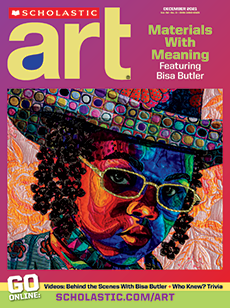On a tree-lined street in Mexico City sits a house that will make any passerby do a double take. The brilliant blue walls are impossible to miss. They surround the Frida Kahlo Museum, dedicated to the artist’s life and work. The blue walls gave the museum its nickname: La Casa Azul (lah KAH-suh ah-ZOOL), or the Blue House.
Core Art Standards: VA5, VA6, VA11
CCSS: R2, R3, SL2
